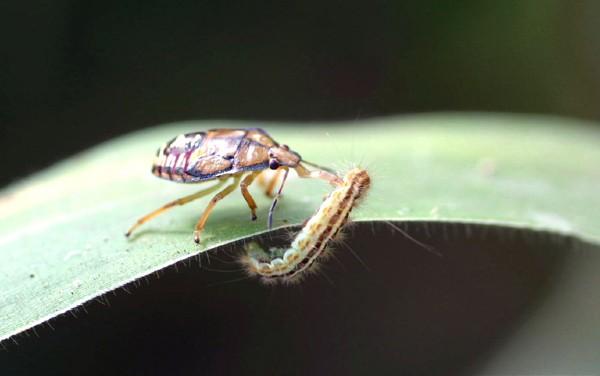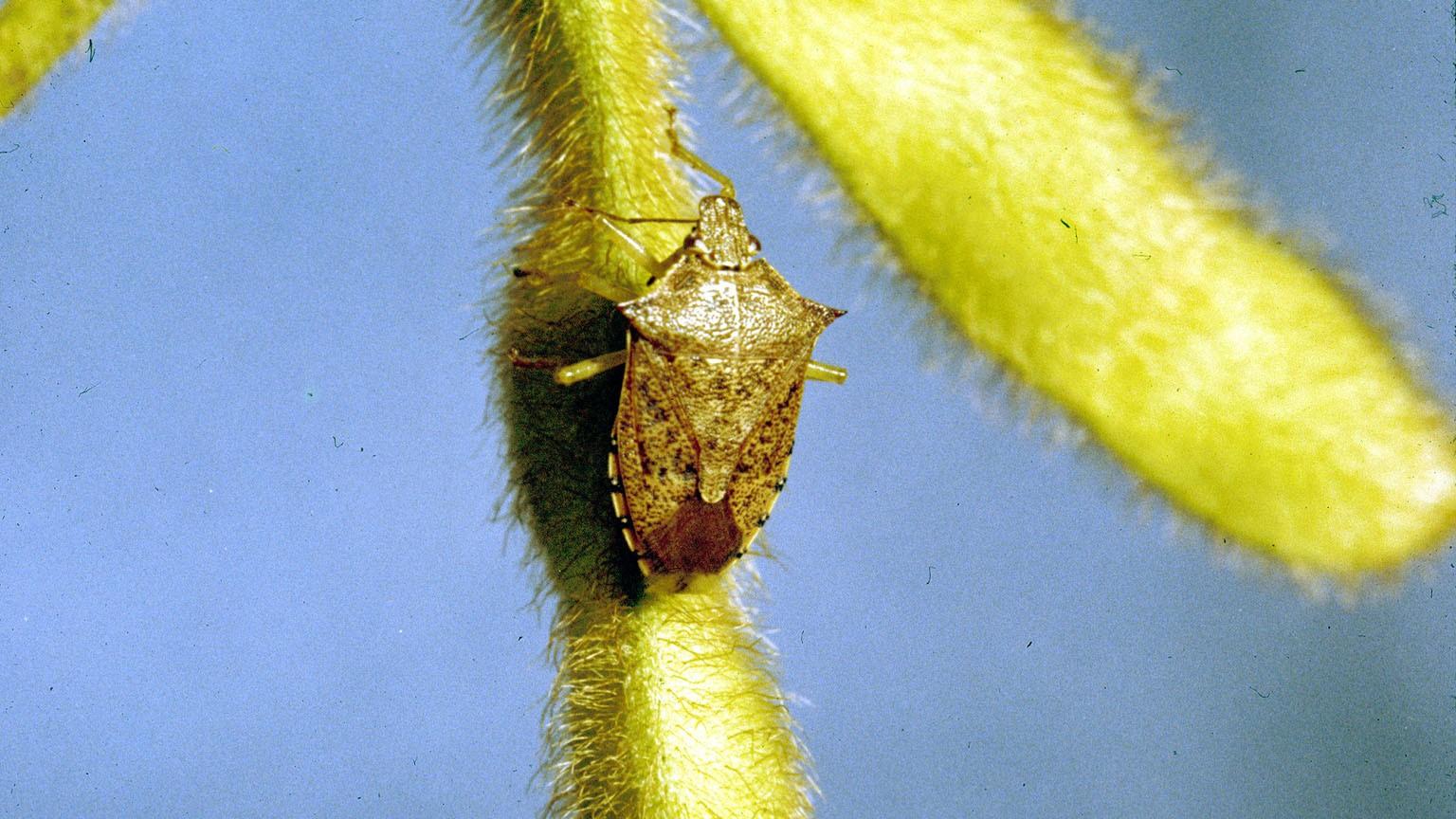About predatory stink bugs
-
Unlike their other stink bug relatives like brown marmorated stink bugs, predatory stink bugs are a gardener’s friend, feeding on more than 100 species of insect pests.
-
Both nymphs and adults attack insects larger than themselves, and suck the body fluids from their prey with a needle-like beak.
-
Predatory stink bugs tend to have a shorter, stouter beak than the long, thin beak of plant-feeding stink bugs.
-
Adults overwinter in sheltered locations and leaf litter, emerging in early spring to stalk and devour their prey.
Important species in Maryland: Spined soldier bug, two-spotted stink bug

Spined soldier bug nymph (left) with prey. Photo: Russ Ottens, University of Georgia, Bugwood.org
Life stage(s) that feed on pests: Nymphs and adults.
Insect(s) fed on: Spined soldier bugs prefer larger insects such as grubs and the larvae of various beetles and moths, and are especially fond of caterpillars. Two-spotted stink bugs often eat the eggs and larvae of Colorado potato beetle, and smaller caterpillars and larvae. 1st instar nymphs of two-spotted stink bugs feed on plant sap, as will adults in early spring before prey are available, but do no significant damage to plants.
Appearance of predatory stink bugs
Eggs: Barrel-shaped, laid in clusters of 15 to 30 on leaves; spined soldier bug eggs are gray, cream or gold; two-spotted stink bug eggs are gray.
Nymphs: Smaller than adults and rounded rather than shield shaped; red and black initially, older nymphs develop yellow, white, tan or black markings; lack spines; wing pads only (lack full size wings).
Adults: Spined soldier bugs are about ¼-½” long, flattened, shield-shaped, light brown in color; one spine on each “shoulder”; yellow beak held beneath the body. Two-spotted stink bugs are up to ½” long, shield-shaped, black with yellow or red markings, a distinctive Y marking on the back, and two black “dash” marks behind the head.
Where to find: Generally throughout the garden, particularly on apples, asparagus, beans, cole crops, cucurbits, eggplant, potatoes, onions, sweet corn and tomatoes.
How to attract and conserve: Pheromones have been used to attract spined soldier bugs to the garden. Year-round ground cover in garden will provide overwintering sites and shelter, as well as plant sap to feed on early in the season. Avoid or reduce use of broad-spectrum insecticides.
Contributors: Mike Raupp, Jon Traunfeld, and Chris Sargent
